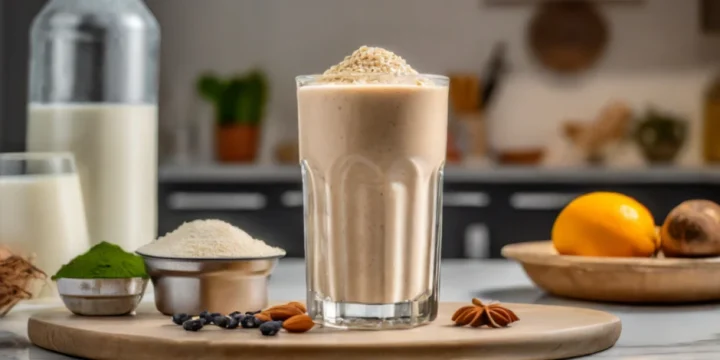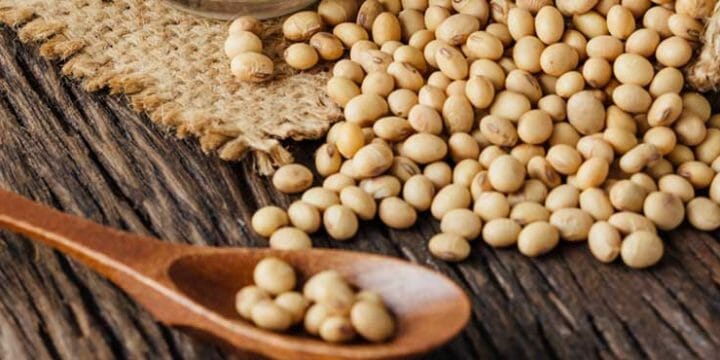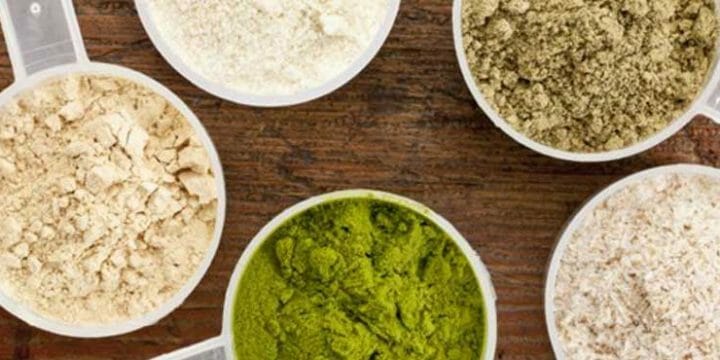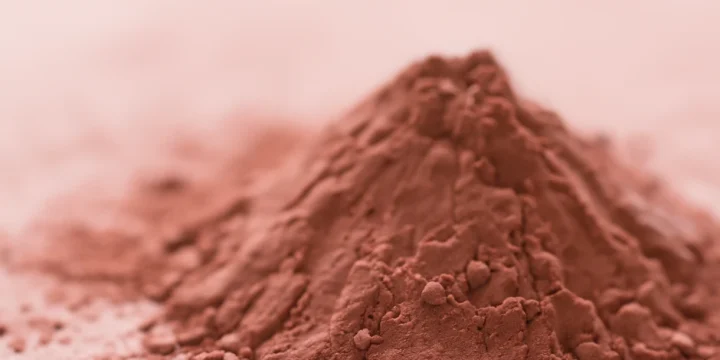Over the past ten years working as a fitness coach, I’ve never had a client who hasn’t come to the gym stacked with a protein powder, although only a few of them actually expressed concerns about the calories they might be getting from it.
To see if protein powder consumption can lead to a higher calorie intake, I teamed up with my dietitian and took two months to investigate the number of calories in protein powders.
Let’s see what I’ve discovered.
Quick Summary
- To manage calorie intake effectively, it's important to understand that a typical scoop of protein powder contains about 113 calories, with variations depending on the type and brand.
- The calorie content in protein powders varies, with a standard scoop containing between 30 and 50 grams, and alternatives like soy, whey, brown rice, hemp, and pea protein powders offering different calorie counts.
- The recommended daily protein intake should constitute 10% to 35% of your total calorie intake, aligning with dietary needs and fitness goals.
- In my experience, while protein powders are convenient for quick protein intake, balancing them with whole foods is crucial for a well-rounded diet and overall health.
Calories in Protein Powders

The calorie count in a protein shake is determined by its contents.
Whether you want to bulk up or slim down, you should always track your calorie intake.
One scoop (around 32 grams) of typical lower-calorie protein powder has 113 calories, 4.5 percent of which come from fat.
Below are the average nutrition facts of protein powders per scoop:
- Overall fat composition is 0.5 grams, amounting to 0.3 grams of saturated fat. There is no trans fat.
- 0.01 grams of polyunsaturated fat, as well as monounsaturated fat.
- Cholesterol is 5.1 milligrams, which is 2 percent of the daily requirement.
- The sodium content is 50 milligrams, which accounts for 2 percent of the daily dietary value.
- 160 milligrams of potassium on average; therefore, it will meet 5 percent of your daily potassium needs.
- The carbohydrate content is 2 grams, with dietary fiber accounting for 1 percent.
- 25 grams of protein. According to FatSecret, the given quantity of protein powder contains 2 percent iron and 12 percent calcium [1].
"Protein shakes are a great source of the nutrient because they're often low in fat, portable, easy to access, and can be added to whatever you want for a big protein boost."
- Kristen Gradney, R.D.N.
Protein Choices

A standard scoop of protein powder contains between 30 and 50 grams; however, the calorie content varies. You can check our article about the best low-calorie protein powders.
According to LiveStrong, a scoop of soy protein powder contains about 175 calories, whereas whey powder contains approximately 100 calories [2].
A scoop of brown rice powder has approximately 110 calories, whereas roughly equal volumes of hemp powder and pea powder contain 135 and 130 calories, respectively.
Alternative Protein Sources
If you're making your own protein shake, you can use soy milk, yogurt, or skim milk as alternate sources of protein.
According to Fage, one glass of low-fat milk contains around 122 calories, one glass of nonfat Greek yogurt contains approximately 135 calories, and a glass of plain soy milk contains approximately 100 calories [3].
Whole Food Protein vs. Protein Powder
Protein powders and whole food sources offer distinct nutritional profiles. Protein powders, often more calorie-dense per gram, provide concentrated protein without additional macronutrients.
While convenient, they may lack the vitamins, minerals, and fiber found in whole foods. Whole food sources, such as lean meats, legumes, and dairy, deliver not only protein but also essential nutrients crucial for overall health.
While some protein powders can be highly processed, whole foods offer a more diverse nutritional package, supporting immune function, digestion, and satiety. However, protein powders can be beneficial for those with dietary restrictions or seeking quick protein intake.
Striking a balance by incorporating both can optimize nutrient intake, ensuring a well-rounded diet that meets protein needs while promoting overall health.
Added Calories in Protein Powder

Over the years, I've noticed that many commercially available protein powders, like the popular vanilla flavors, often contain extra ingredients that increase the calorie count.
These ingredients include:
- Artificial flavors/sweeteners: Sucralose, aspartame, corn syrup, and saccharin are common artificial sweeteners used in protein powders. Some individuals may have unfavorable responses to these sweeteners, which can include headaches, gastrointestinal irritation, and weight gain.
- Powdered skim milk/milk solids: Skim milk powders and solids are frequently employed as a low-cost bulking ingredient in lower-quality protein powders. According to ScienceDaily, they contain a lot of lactose sugars that add more calories to the protein shake and potentially increase blood sugar [4].
- Vegetable fats and oils: Many fat-loss and protein shakes use these substances to improve richness, thus making them taste creamy. They contain trans fat, which adds a significant number of calories to the protein shake.
- Fillers: Fillers are commonly used to bulk up proteins and save expenses for the producer. Coconut flour, prebiotic fiber, sugar, and other substances are examples of fillers contained in protein powders.
Although these additives provide calories, most of them come from concentrated protein content.
When you make a shake, the additions are more likely to be whole-food components such as fruits, nut butter, honey, and cocoa powder that can make you gain weight.
Here’s the nutritional information about the whole food components you can expect in protein shakes:
- A midsize banana provides around 105 calories to the shake.
- A teaspoon of nut butter has around 94 calories.
- A teaspoon of honey contains 64 calories.
- A teaspoon of cocoa powder contains 12 calories.
I usually mix my protein powder with water to avoid added sugar that will lead to weight gain by increasing my fat mass instead of muscle mass.
FAQs
How Many Calories Are in One Scoop of Protein Powder?
There are approximately 113 calories in one scoop of protein powder.
Is Protein Powder Good for Weight Loss?
No, protein powders are not that good for weight loss because they have added calories. But when combined with the appropriate workout, they may help you lose weight.
How Much Protein Should I Eat a Day?
The amount of protein you should eat daily should be 10% to 35% of your caloric intake.
Is It Okay to Drink Protein Shake Every Day?
Yes, it is okay to drink a protein shake every day, but you should ensure that most of your protein comes from whole food sources.
Does Whole Milk Add Calories to a Protein Shake?
Yes, whole milk adds calories to a protein shake. Unlike other forms of whole foods, it can add as much as 100 calories and more, depending on how much you use in your mix-ins.
References:
- https://www.fatsecret.com/calories-nutrition/generic/protein-powder
- https://www.livestrong.com/thedailyplate/nutrition-calories/food/mlo-natural/brown-rice-protein-powder/
- https://usa.fage/products/yogurt/fage-total-0
- https://www.sciencedaily.com/releases/2020/07/200710104837.htm
About The Author
You May Also Like






